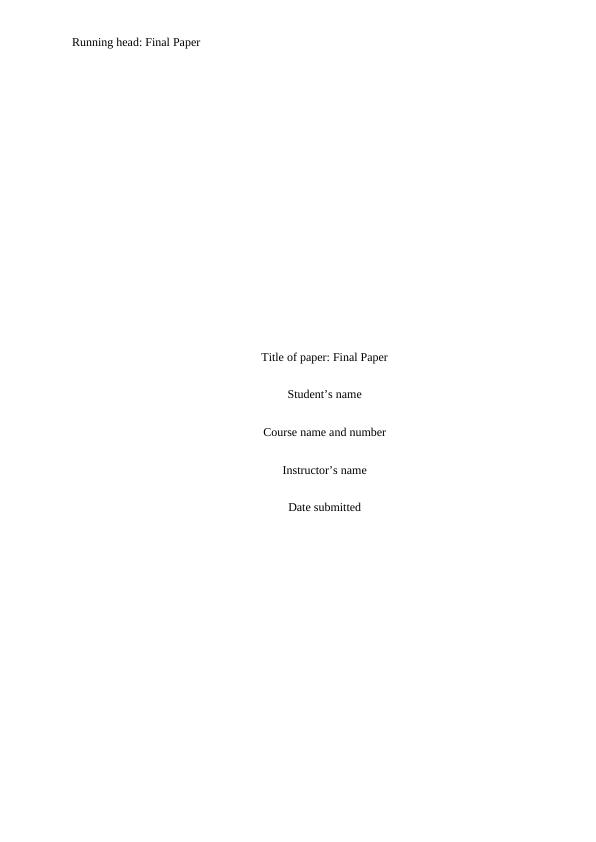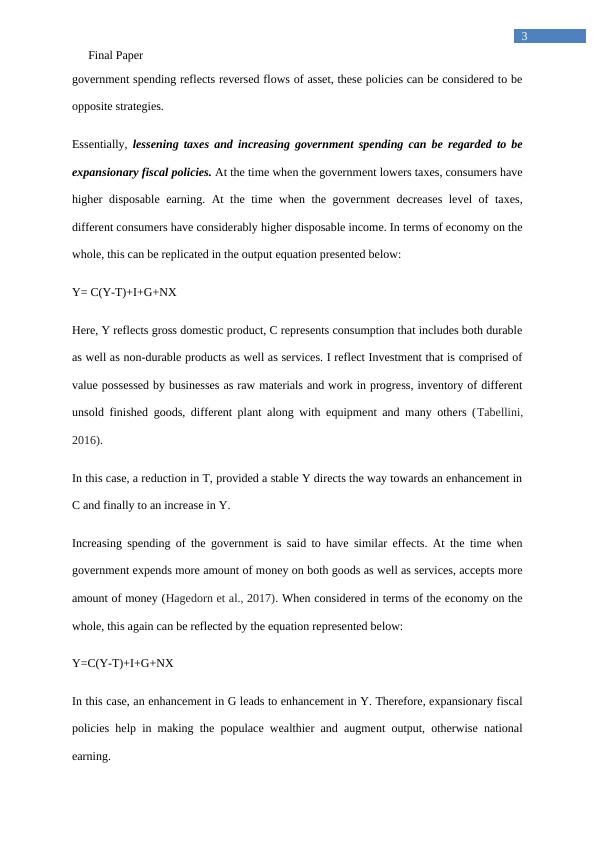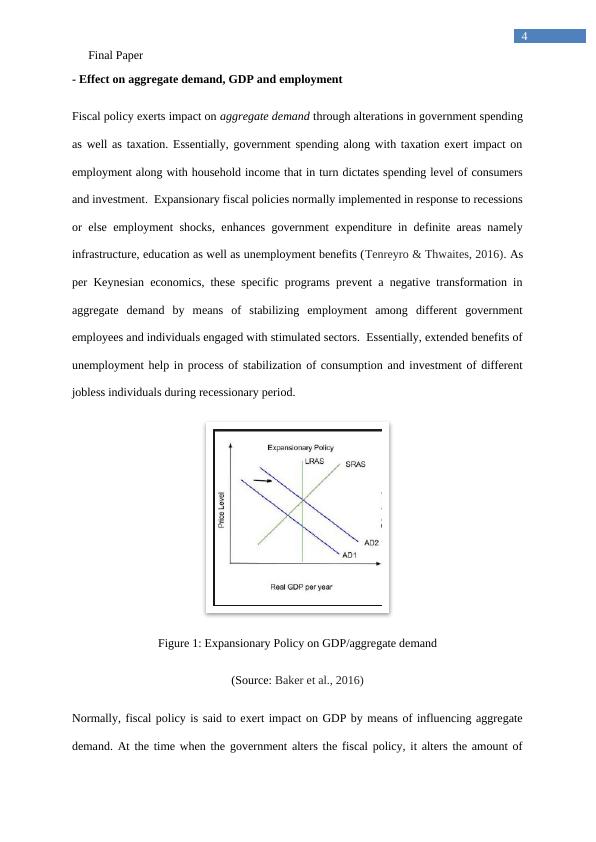Expansionary Fiscal and Monetary Policies: Actions Undertaken by the Federal Reserve
14 Pages3661 Words56 Views
Added on 2023-06-09
About This Document
This paper explains the expansionary fiscal and monetary policies undertaken by the Federal Reserve and the government. It discusses the necessary changes in taxes and government spending, impact on aggregate demand, GDP, and employment. It also explains the actions of the Fed in regard to the three tools of expansionary monetary policy.
Expansionary Fiscal and Monetary Policies: Actions Undertaken by the Federal Reserve
Added on 2023-06-09
ShareRelated Documents
End of preview
Want to access all the pages? Upload your documents or become a member.
Macroeconomics Assignment Solved
|12
|2536
|80
Assignment on Monetary Policy and Fiscal Policy
|9
|1396
|11
The Tax Cuts and Jobs Act (TCJA)
|5
|1003
|74
BMP4003 Business Environment Exam Paper 2022/22
|7
|2408
|336
Impact of Government Expenditure on Aggregate Demand
|5
|1381
|74
BMP4003 Business Environment Exam Paper 2022/2022
|7
|2918
|239




